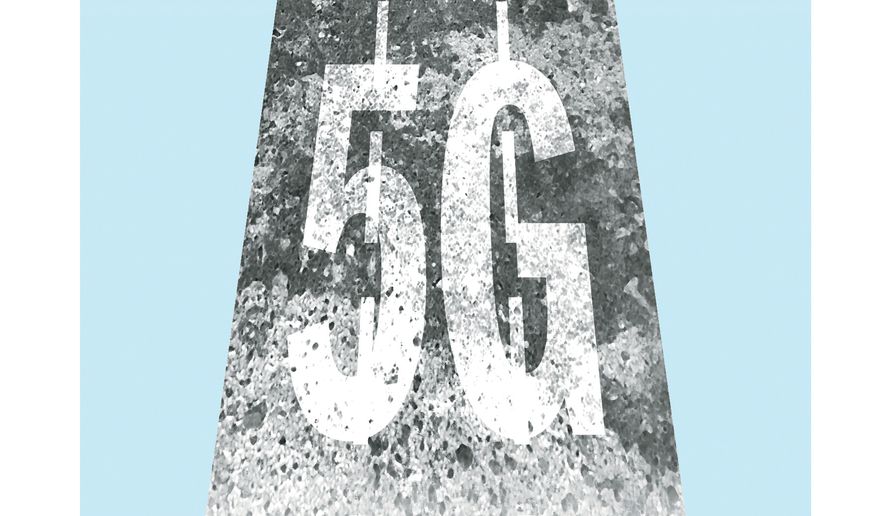OPINION:
Now, more than ever, the United States needs a reliable and fast Internet. In an attempt to stem the rising tide of COVID-19 cases, anyone who can possibly work or learn from home is doing just that. Americans are using the Internet to stay connected to their colleagues, teachers and family. If it weren’t clear already, the Internet isn’t an option anymore — it’s as much of a necessity as indoor plumbing.
Thankfully, the Federal Communications Commission (FCC) is working tirelessly to maintain and improve upon Internet conditions for Americans during the crisis and beyond.
As it stands, our existing Internet infrastructure in the United States has helped weather the coronavirus-induced spike in demand with only negligible effects on speeds. Not every country is doing as well. In contrast, European Union regulators recently ordered sites like Netflix and YouTube to reduce the quality of their streaming services to handle the recent uptick in usage.
Meanwhile, the FCC is wisely taking extra steps to ensure connectivity beyond its successful regulatory agenda so far under the Trump administration. The commission asked broadband and telephone service providers to sign on to the Keep Americans Connected Pledge promising to open up wi-fi hotspots to more people, waive late fees, and not terminate services for residential and small business customers who miss payments “due to the disruptions caused by the coronavirus pandemic.”
As part of the broader initiative, the FCC is also temporarily authorizing 33 wireless Internet service providers (ISPs), including T-Mobile, U.S. Cellular and Verizon, to use additional spectrum space.
But the FCC isn’t stopping with Keep Americans Connected. It has taken further steps to improve connectivity by moving forward with its plan to repurpose a chunk of the mid-band (C-band) spectrum come December, with an auction that’ll open up the C-band to rural Internet providers and 5G services. The FCC and Congress can deliver even more to Americans by freeing up space in the 3.1-3.55 GHz and 6 GHz bands for licensed use.
Wi-fi is obviously very important to Americans, and especially now. That’s why some policy-makers, like Rep. Morgan Griffith, Virginia Republican, want to prioritize unlicensed spectrum use, like wi-fi, over licensed use — which is reserved for a particular provider.
Unlicensed spectrum wavelengths can often operate in the same spectrum band as licensed use, and politicians like Rep. Jerry McNerney, Califronia Democrat, believe that the entire 6 GHz band should be free range for unlicensed use. Allowing for unlicensed spectrums to fully use the 6 GHz band would certainly be convenient for people using wi-fi at restaurants and for companies like Xfinity that offer citywide wi-fi.
Carriers like AT&T have expressed concern about connectivity and disruption issues with layering unlicensed and licensed use. If there’s interference between networks, then there will be poor connectivity for both the licensed and unlicensed user. This could potentially disrupt monitoring of the electric grid, as well as more trivial things, like a Netflix show’s ability to load quickly.
There are 20 countries with 5G networks, the United States is the only country that presently has no mid-band availability for 5G networks. A comparative study points to our lack of licensed spectrum availability as the reason for our sluggish 5G rollout. By designating parts of the spectrum for licensed and unlicensed use, the U.S. can avoid potentially dangerous interference. It’d be like adding a median on a highway to distance cars.
One advantage to being behind other countries in regards to 5G is that we can look at what plans worked and did not work for them. Germany, for example, has notoriously slow Internet speed while being a 5G country. Their lack of fiber optic access and older Internet infrastructure has reduced their potential Internet speeds. The U.S. Internet infrastructure is more diverse and spread out, so we may be better suited to gradually improve broadband speeds across the country and big-city 5G infrastructure at the same time.
To keep up with the rest of the 5G world, the U.S. needs to double its licensed mid-band access to service providers — be it licensed or unlicensed. Chairman Ajit Pai and the FCC showed with the Keep Americans Connected pledge that when under pressure, they can quickly sort out a solution without disrupting the lives of Americans through intentional reduction in streaming quality, as is happening in Europe.
The FCC has delivered better service for Americans. Instead of rationing our data, the agency stepped up under pressure. Coming out of quarantine and away from social distancing, our understanding and need for enhanced Internet service will continue to grow. We need safe spectrum access and licensing policy that will endure given another time of great need.
• Patricia Patnode is the outreach director for LoneConservative.com and is a contributor for Young Voices.




Please read our comment policy before commenting.